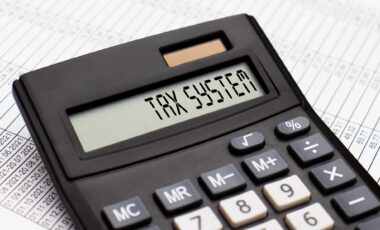Australians are being urged to check their private health insurance coverage, with many at risk of being hit by an additional tax from the Australian Taxation Office (ATO). Each year, hundreds of thousands of Australians find themselves paying the Medicare Levy Surcharge (MLS), which adds an average of $1,318 to their tax bill. Recent data from the ATO revealed that the number of people paying this surcharge has grown significantly, underscoring the importance of understanding the impact of health insurance choices on taxes.
The Medicare Levy Surcharge is designed to incentivize higher-income earners to take out private health insurance. However, many are unaware of the surcharge’s implications, making it crucial for Australians to be proactive and verify their health insurance status before the end of the financial year.
Significant Increase in The Number of People Paying The Surcharge
In the 2022-23 financial year, 768,537 individuals paid the Medicare Levy Surcharge, a substantial increase of almost 25% from the previous year, when 616,903 people were affected. The surcharge is applied to taxpayers who earn above a certain threshold but do not have the required level of private health insurance coverage. It is meant to encourage those with higher incomes to secure private hospital cover rather than relying on the public system.
The surcharge, which is in addition to the standard 2% Medicare levy, ranges between 1% and 1.5% of income, depending on how much a person earns. For many Australians, the financial impact of this surcharge can be significant, especially as the number of people who fall into the surcharge category continues to rise.
New Thresholds for The Surcharge
Starting on July 1, the thresholds for the Medicare Levy Surcharge will increase slightly. For singles, the income threshold at which the surcharge applies will rise from $97,000 to $101,000. For families, the threshold will increase from $194,000 to $202,000. These changes are part of ongoing adjustments to ensure that the surcharge remains targeted at higher-income earners.
While these increases provide some relief to those on the cusp of the threshold, many Australians may still find themselves subject to the surcharge if they do not meet the private health insurance requirements. The surcharge is calculated based on taxable income, so individuals with reportable fringe benefits or other taxable income may still be liable, even if their salary alone doesn’t exceed the threshold.
Medicare Levy Surcharge warning as more Aussies hit with $1,318 ATO tax: ‘Don’t even know’ https://t.co/onhhlVI0Hd
— Yahoo Finance Australia (@YahooFinanceAU) June 30, 2025
Lack of Awareness about The Surcharge
One of the key issues highlighted by experts is the widespread lack of awareness regarding the Medicare Levy Surcharge. According to an iSelect survey, 55% of health insurance policyholders were unaware of recent reductions in the private health insurance rebate. Furthermore, 20% of Australians are completely unaware of whether they are paying the surcharge. This lack of knowledge could result in unexpected tax liabilities for individuals who fail to secure private health insurance coverage or are unaware that their income places them above the surcharge threshold.
Experts urge Australians to pay attention to their health insurance status as the end of the financial year approaches. While many may not think about their private health insurance at tax time, checking eligibility and ensuring compliance with the surcharge requirements could save them from costly surprises when filing their taxes.
Government Rebate and Eligibility for Private Health Insurance
The government provides a rebate to help offset the cost of private health insurance premiums for those who meet specific income thresholds. For the 2025-26 financial year, the rebate will be available to singles earning $158,000 or less, and families earning $316,000 or less. This income-tested rebate ranges from 8% to 32% of the premium, depending on the individual’s income and age.
However, this rebate is not available to those who exceed the income thresholds, which is why securing private health insurance can be particularly important for higher earners. The combination of the surcharge and the potential loss of the rebate makes it vital for individuals to assess their health insurance coverage in relation to their income and tax obligations.
Taking Action Before The Financial Year Ends
As the end of the financial year approaches, Australians are encouraged to review their health insurance policies to ensure they meet the requirements and avoid the Medicare Levy Surcharge. It’s important to note that it’s too late to take out private health insurance after the fact to avoid the surcharge for the current financial year. Taxpayers are liable for the surcharge for each day they are not covered, meaning retroactive coverage will not eliminate the tax liability.
This underscores the importance of planning ahead and making sure that health insurance is part of the financial checklist for tax time. With millions of Australians potentially affected by the surcharge, being proactive in managing health insurance coverage could save taxpayers from facing an unexpected financial burden.









